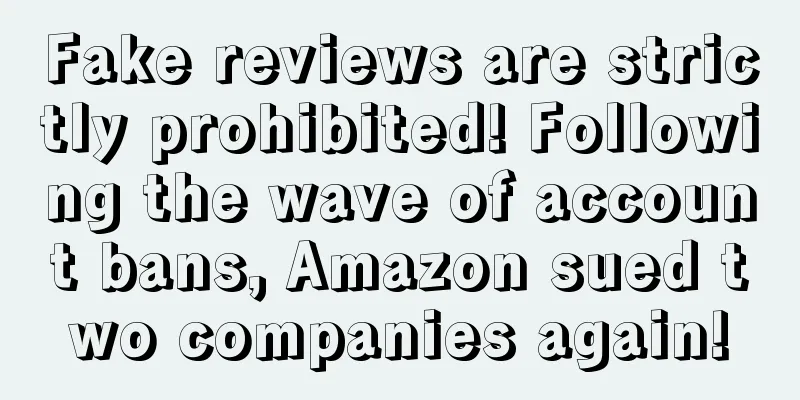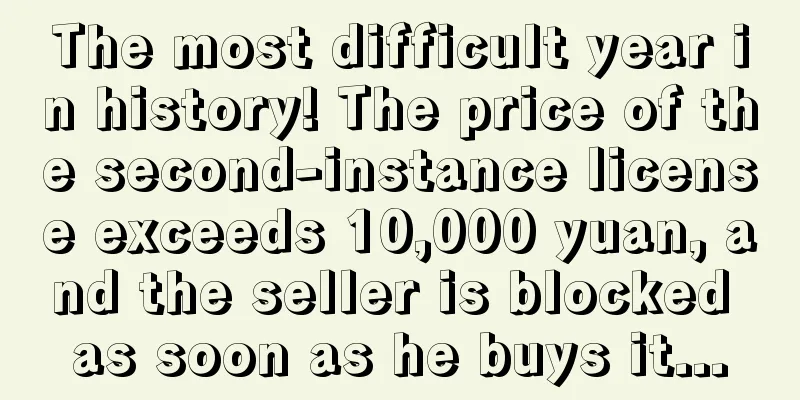|
Marketing has become a must for Amazon sellers. Advertising is a way that can produce immediate results, while SEO tends to be a long-term process. Amazon's search results page (SERP) is mainly based on advertising, but there is still room for SEO (search engine optimization). Today, let's analyze the operating principles of Amazon SEO and teach sellers how to improve their natural rankings. How Amazon SEO Differs from Google SEO There are three key points in the Google system algorithm: content, system algorithm, and derived links. A good user experience includes page jump speed, the adaptability of actual search results to the target product, product copywriting and links (that is, the suffix on the domain name). The ranking of products will be affected by system algorithm updates and competing products. However, these contents are not useful on Amazon. Amazon SEO mainly uses the title, keywords, description, background keywords of the product details page, and the historical sales of products and stores, and future expected sales as parameters for evaluating sellers' stores and products. The two search engines have different focuses, and advertising marketing is always needed to fill the gaps that SEO cannot reach. On Amazon, advertising campaigns are very effective in increasing product weight. What is Amazon A9 Algorithm? Google's approach is to use a core ranking algorithm and several other algorithms for comprehensive calculation. Amazon has only a single system - A9, which is used to determine the ranking of products in search results. A9 is also involved in the calculation of advertising, image matching of Amazon apps and product question and answer sections. Amazon also explained how the search engine works on its official website: "One of the goals of A9 is to provide customers with the best search results. Once Amazon finds products that match the customer's search terms, the algorithm will score them and present the most relevant products to the user. Thanks to the structured product catalog, the A9 algorithm will self-learn from historical data and data that is important to customers to explore the rules, combine inductive reasoning and deductive models, and recommend products to consumers based on merit." It now appears that Amazon is slowing down its investment in A9 and turning to projects such as Whole Foods, Ring, and Blink. Many Amazon sellers are aware of the A9 update. The reason is that black hat SEO techniques are used to create fake reviews, and ASINs are copied and abused to varying degrees, making the platform full of junk listings, which is a big hidden danger for Amazon, consumers, and law-abiding sellers. A9 will search the title, bullet points, description and keywords set in the background of the product details page, and make a comprehensive evaluation of the product's relevance and performance based on other information about related products and consumers that the system has. For example: Consumer personal characteristics, such as age, gender, etc. Consumers’ browsing and purchasing history on Amazon; The product’s historical sales and ratings; Optimizing listings is the first step in Amazon SEO. As mentioned at the beginning of the article, if you want to improve your product’s search ranking on Amazon, it is necessary to work hard on the listing content. The first thing to do is to collect keywords. Brand keywords only account for 22% of Amazon's search volume, so sellers need to study common words used by consumers, not just brand names. Once you have mastered the product keywords, sellers need to insert alternative keywords in the product title, bullet points, description, and backend keyword settings. Other parts should not be omitted, such as product images and A+ content. Here are some useful keyword assistant software: Helium 10 , Jungle Scout , SellerMotor and Egrow.io . 1. Optimize product titles The title is the gateway for consumers to click into the product details page. They usually enter product keywords or key fields in the search bar, or browse a category, use the filter tool on the left to filter, and then make a choice based on the product title. This is one of the reasons why the title is so important. The title can tell consumers the basic information of the product in the shortest time, and some content to avoid homogenization. For example, some international sellers like to insert the country of origin in the title so that consumers can distinguish the source of the product at the first time. Generally, the product title will contain the following content: Check the titles of competing products, especially the best-selling titles; You can enter up to 150 characters (including spaces). Mobile titles (including the Amazon app) have about 60 characters (including spaces), so put the most important information at the beginning of the title. Emojis are allowed in most cases. Emojis can make the title more vivid and eye-catching. Use separators between phrases; Do not use HTML code as a title; 2. Optimize bullet points Bullet points are the second product information that consumers browse after the title. Their importance is self-evident. Bullet points should include the following: Applicable circumstances; ·Main points that distinguish it from similar products; · You can complete 11 key points if you complete 5 key points; Each bullet point should not exceed 1,000 characters or 25 words. Structural points: Start with a brief summary of the function and then briefly describe the working principle; Don’t repeat the keywords in the title. Keywords that can’t fit in the title can be put in the bullet points. ·Emojis can be inserted into the bullet points; No HTML code may be used; 3. Optimize product descriptions Few people will read the product description carefully, but the product description makes up for the shortcomings of the title and bullet points to a certain extent and plays a role in supplementing the explanation. Sellers can insert no more than 2,000 characters in the description section, and spaces and HTML codes (visual editor) will also be counted. Sellers should pay attention to the following points when writing descriptions: ·The description should be as detailed as possible; Pre-empt consumers in the description and respond to questions that may deter them from purchasing. Study customer reviews and pay attention to both the good and the bad. FAQ, instructions, and legal disclaimers should all be clearly listed; Use bold, subheading, and sentence breaks to divide paragraphs into different levels; Readability is important, try not to exceed 25 words per sentence; You can add emojis to the description; Putting “<b>” at the beginning of a sentence can make the field bold; “<br>” can wrap the line. Mastering HTML code is the key to beautifying descriptions. You can use a visual HTML editor, such as HTML5-Editor.net. 4. Optimize product images Pictures are the facade of the product. A good picture is better than a thousand words from the seller. People are visual animals. Good pictures can not only arouse consumers' recognition of the beauty of the product, but also tolerate defects such as product flaws or cost-effectiveness to a certain extent. Even if the product picture does not directly affect the search ranking of the product, it can also indirectly promote the conversion rate. Sellers can upload up to 7 pictures. Sellers should plan product pictures from several perspectives. Generally, foreground pictures, rear views, side pictures, packing pictures, packaging pictures, instructions for use pictures, and pictures of the status of use are common parts of the product picture structure. Some other product picture dimensions: The image size must be set to 1000×1000; Minimize the white borders around the image. You can include some text, but not too much, as it may not be approved during the platform review; If it is a bundled sale, free gifts or discounts, consumers expect sellers to give an expected promise, so the product image should include all the products in the corresponding package selected by the consumer; You can choose an object, such as a hand, and place it next to the product as a reference. Some people like to refer to the size chart, while others like to visualize it. Sellers should try their best to accommodate both. If the seller has A+ pages, they can get the permission to upload videos or scroll through product pictures, which the seller can make good use of; 5. Backstage keyword settings As the name suggests, background keywords are added through the background. The A9 search engine can be associated with the keywords set in the background, but they are not visible to consumers. There are two types of backend keywords: Standard keywords, which can only hold 50 characters; Platinum keywords, which can hold 100 characters. Only sellers whose products are on the bestseller list of a certain category or keyword can obtain this permission. The following are some key points for writing backend keywords: Keywords that are not already used in the title, bullet points, and description can be placed here; Please do not use exclamation marks. The actual purpose of exclamation marks is to accurately match keywords. Adding exclamation marks to backend keywords is irrelevant. ·Please do not use conjunctions and auxiliary words such as "和" and "的"; Do not insert irrelevant words; Use singular form of words, not plural form; If sellers have no idea how to choose keywords, here are some software assistants and some methods to refine keywords to help sellers think more creatively: Egrow.io and Keyword Inspector are both popular software assistants in the industry. You only need to know the ASIN of your competitors and you can find out the keyword settings of similar products with the help of software assistants. Only by knowing yourself and your opponent can you win every battle. Extract keywords from PPC reports - the system will display seller ads based on the characters entered by consumers in the search bar, or selectively display ads based on their purchase history to promote marketing. Sellers can use the system's statistics on traffic entrances to further refine keywords; Look at product attributes, size, weight, material, and other specific features, all of which can be indexed by the A9 algorithm; Several factors that affect Amazon product rankings Platform endorsement (Amazon's Choice, Best Seller, Deal of the Day, and other honors given by Amazon to products or stores); Product ratings, number of reviews, and seller responses; Logistics. There are three types: Amazon carries Prime-marked products; a third party carries Prime-marked products; and dropshipping. Product click-through rate; Product category settings; Number of product images; If a seller runs out of inventory, they will soon be out of favor. This is the reality of the platform. Sellers may face the following situations: The product is not visible under the original brand keyword; · Lose the golden shopping cart booth; The advertising campaign was automatically stopped; In addition, the following situations may have a negative impact on the seller's product ranking: The product is not available on Amazon or is not Prime-labeled. Poorly written product descriptions Too many typos, poor browsing experience; Inserting too many emojis; Content violations, such as using "best seller for 2019" in the description; Falsification of product information; The sales volume increases abnormally within a short period of time, and the platform has reason to believe that the seller’s order channel is not compliant; Used black hat techniques, such as searching for products multiple times, repeatedly clicking on product details, and repeatedly adding products to the shopping cart. These unorthodox methods of increasing product weight not only attract the attention of the platform and trigger warnings, but are also useless; Recommendation! Useful Amazon SEO software tools Viral Launch and Jump Send (now part of Jungle Scout) are two software assistants that can increase store product sales and the number of reviews in a short period of time. Currently, more than 100,000 users are using each of these two softwares, which are among the best in terms of user base among similar products. Sellers cannot be too "explicit" in asking consumers to leave reviews, which is an act expressly prohibited by the platform. However, Viral Launch and Jump Send have channels to indirectly contact consumers, and with the help of software assistants, store weight and sales will rise against the trend in the near future! Listing Optimization Tools ·SellerApp Listing Optimization Tool (free); AMZDataStudio Listing Optimizer (paid) In addition, the following software assistants can help sellers understand product ranking changes in real time:
|










